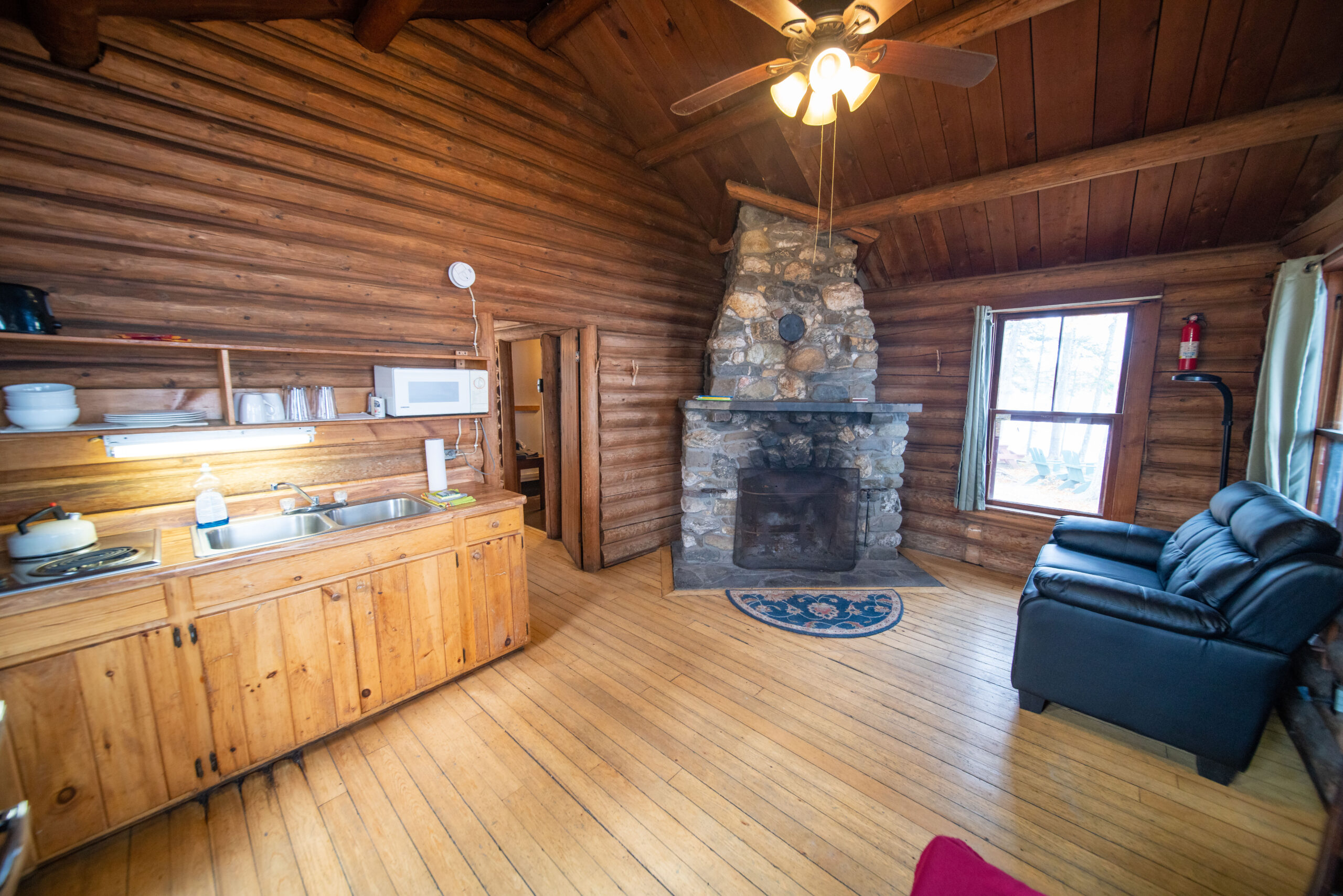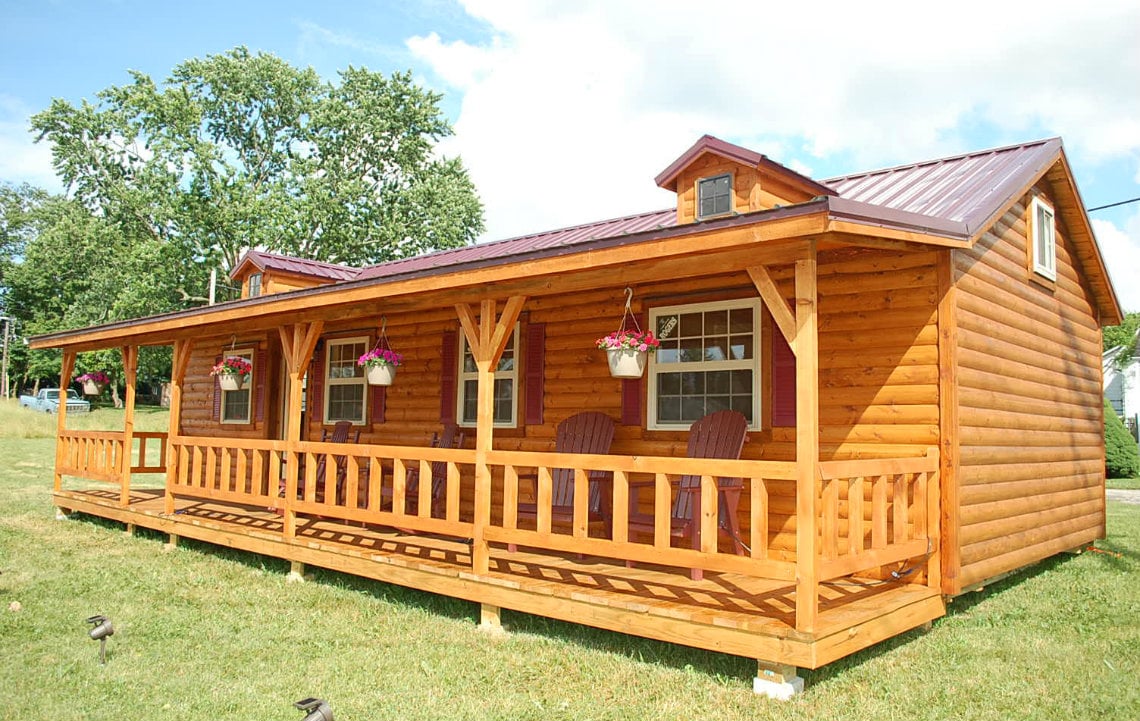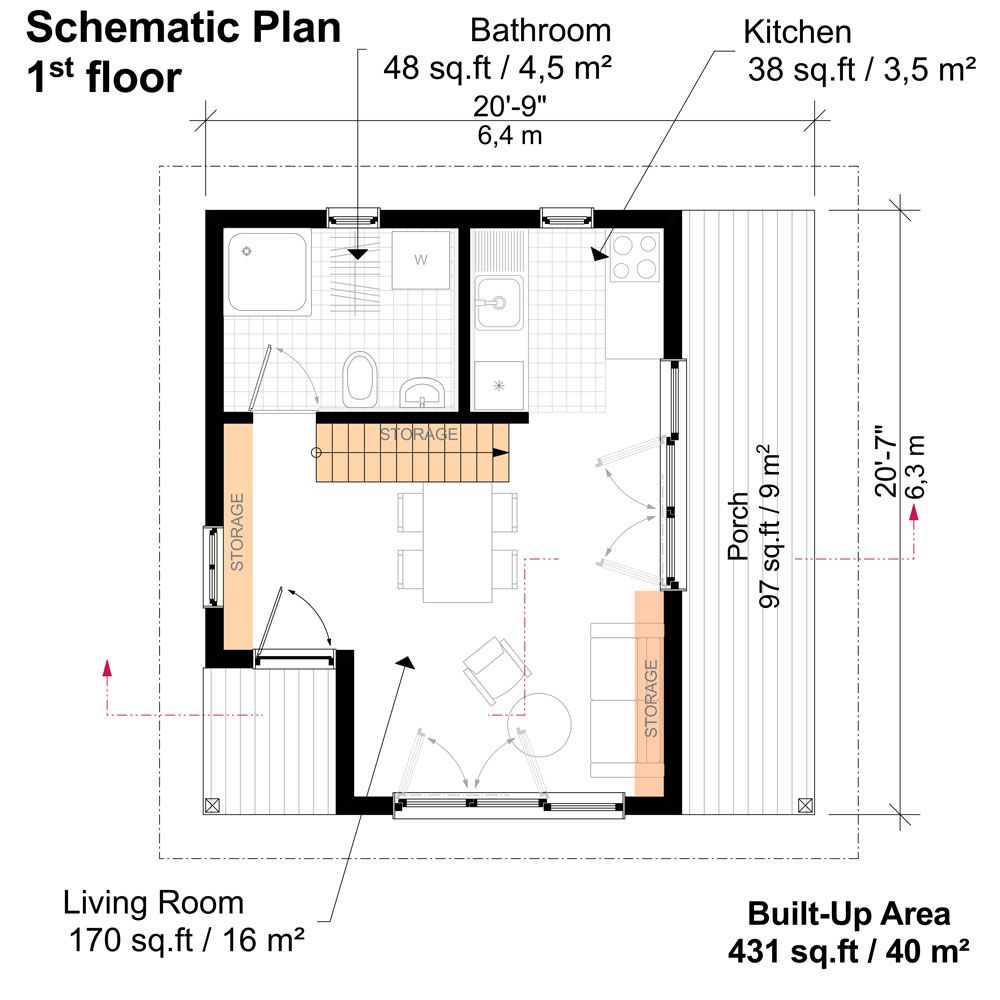Planning and Design

Building a DIY 2-bedroom cabin can be a rewarding experience, but it requires careful planning and design to ensure a functional and comfortable space. This section will guide you through the essential factors to consider, from determining the size and location to designing a layout that meets your needs.
Determining Size and Location
The size of your cabin will depend on your budget, the number of people you plan to accommodate, and the desired features. Location is crucial as it affects factors like accessibility, climate, and proximity to amenities.
- Size: A 2-bedroom cabin typically ranges from 600 to 1,000 square feet. Smaller cabins are more affordable to build but offer less living space. Larger cabins provide more room for amenities but come with higher construction costs.
- Location: Consider factors like proximity to utilities, accessibility, zoning regulations, and potential environmental impacts. Research local building codes and permits before purchasing land.
Budgeting and Features
Establishing a realistic budget is essential for planning your cabin. Prioritize features based on your needs and financial constraints.
- Budget: Determine a budget range and allocate funds for land purchase, construction materials, labor (if hiring), and unexpected costs.
- Features: Prioritize essential features like a well-functioning kitchen, bathroom, and comfortable sleeping arrangements. Consider optional features like a fireplace, porch, or loft based on your budget and needs.
Designing a Functional Layout
Creating a functional and comfortable layout is crucial for a 2-bedroom cabin. Consider the flow of traffic, natural light, and the placement of essential elements.
- Sleeping Arrangements: Ensure bedrooms offer privacy and adequate space for beds, storage, and furniture.
- Living Space: Design a comfortable living area with seating, a dining table, and space for entertainment.
- Kitchen and Bathroom: Optimize the layout for efficient use of space. Consider a compact kitchen with essential appliances and a well-ventilated bathroom.
Floor Plans and Design Ideas
Numerous floor plans and design ideas cater to various needs and preferences. Explore different styles and layouts to find inspiration for your cabin.
- Open Floor Plan: Offers a spacious and airy feel with minimal walls, ideal for small cabins.
- Traditional Cabin Style: Features a cozy and rustic feel with exposed beams, wood siding, and a fireplace.
- Modern Cabin Style: Emphasizes clean lines, large windows, and contemporary finishes.
Design Considerations and Tips
| Feature | Description | Considerations | Tips |
|---|---|---|---|
| Foundation | The base of your cabin. | Soil conditions, frost line, budget. | Consider a concrete slab, crawl space, or pier foundation based on your needs and budget. |
| Framing | The structural skeleton of your cabin. | Load-bearing walls, roof design, building codes. | Use quality lumber and follow building codes for structural integrity. |
| Roofing | Protection from the elements. | Climate, slope, budget. | Consider asphalt shingles, metal roofing, or cedar shakes based on your location and budget. |
| Windows and Doors | Light, ventilation, and access. | Energy efficiency, size, style. | Choose windows and doors that provide adequate insulation and ventilation. |
| Insulation | Protection from heat and cold. | Climate, budget, building codes. | Use appropriate insulation materials for your climate to ensure comfort and energy efficiency. |
| Exterior Finishes | The outer layer of your cabin. | Aesthetics, durability, maintenance. | Consider wood siding, stone veneer, or stucco based on your preference and budget. |
| Interior Finishes | The inner layer of your cabin. | Aesthetics, durability, maintenance. | Choose finishes that complement your design style and are easy to maintain. |
| Heating and Cooling | Climate control for comfort. | Climate, energy efficiency, budget. | Consider a wood-burning stove, heat pump, or central air conditioning system based on your needs and budget. |
| Plumbing and Electrical | Essential utilities for your cabin. | Accessibility, building codes, budget. | Hire qualified professionals for plumbing and electrical work to ensure safety and compliance with building codes. |
Construction and Building: Diy 2 Bedroom Cabin

Building a 2-bedroom cabin is a rewarding project that requires careful planning and execution. From laying the foundation to installing the roof, each step involves specific techniques and considerations to ensure a sturdy and durable structure.
Foundation
A solid foundation is crucial for any building, especially a cabin that will withstand the elements. The type of foundation you choose will depend on the soil conditions and the weight of the cabin. Some common foundation types include:
- Concrete slab foundation: This is a popular choice for cabins due to its simplicity and durability. It involves pouring a thick layer of concrete directly onto the ground. This foundation is suitable for level ground with good drainage.
- Crawl space foundation: This type of foundation provides a space for utilities and ventilation. It consists of concrete piers supporting a system of beams and floor joists. This option is suitable for areas with uneven terrain or where you need to access plumbing or electrical wiring.
- Basement foundation: If you desire additional living space, a basement foundation can be an option. It involves excavating the ground and pouring concrete walls to create a below-ground space. This foundation is more complex and expensive than the others.
Framing, Diy 2 bedroom cabin
The framing of a cabin provides the structural support for the walls, roof, and floors. There are several framing methods available, each with its own advantages and disadvantages.
- Traditional framing: This method uses lumber studs spaced 16 inches apart to create walls and ceilings. It is a common and relatively affordable method, offering flexibility in design and layout.
- Post-and-beam framing: This method uses larger, heavier timbers to create the main structural elements of the cabin. It is known for its strength and aesthetic appeal, often featuring exposed beams that add character to the interior. This method requires skilled labor and specialized tools.
- Modular construction: This method involves pre-fabricated wall panels and roof trusses that are assembled on-site. It offers faster construction times and greater precision but may limit design flexibility. This method is suitable for larger projects with standardized designs.
Insulation
Proper insulation is essential for maintaining a comfortable and energy-efficient cabin. Different types of insulation materials are available, each with its own properties and benefits.
- Fiberglass insulation: This is a common and affordable option, available in batts or rolls. It provides good thermal resistance and is easy to install. Fiberglass can be itchy and requires protective gear during installation.
- Spray foam insulation: This type of insulation is sprayed into cavities, forming a continuous seal that reduces air infiltration. It provides excellent thermal performance and moisture resistance but can be expensive.
- Cellulose insulation: This insulation is made from recycled paper and is a good choice for environmentally conscious builders. It provides good thermal resistance and sound absorption. Cellulose insulation can be dusty and requires careful handling.
Siding
The siding of a cabin protects the exterior from the elements and contributes to its aesthetic appeal. Various siding materials are available, each with its own advantages and drawbacks.
- Wood siding: This classic choice offers natural beauty and durability. Wood siding requires regular maintenance, including painting or staining, to prevent rot and insect infestation.
- Vinyl siding: This synthetic option is low-maintenance and resistant to moisture and insects. Vinyl siding is available in various colors and styles but can be less durable than wood.
- Metal siding: This durable and fire-resistant option is often used for cabins in areas prone to extreme weather conditions. Metal siding can be noisy in heavy rain or wind and may require special installation techniques.
Roofing
The roof of a cabin protects the interior from rain, snow, and sun. The choice of roofing material depends on factors such as climate, budget, and aesthetic preferences.
- Asphalt shingles: This common and affordable option offers good protection and is available in various colors and styles. Asphalt shingles have a limited lifespan and require periodic maintenance.
- Metal roofing: This durable and long-lasting option is resistant to fire, wind, and hail. Metal roofing can be noisy in heavy rain or wind and may require special installation techniques.
- Tile roofing: This elegant and durable option offers excellent protection and aesthetic appeal. Tile roofing is expensive and requires specialized installation skills.
Tools and Equipment
Building a cabin requires a variety of tools and equipment. Here is a list of essential items:
- Power tools: A circular saw, drill, jigsaw, impact driver, and nail gun are essential for cutting, drilling, and fastening materials.
- Hand tools: A hammer, level, tape measure, utility knife, and pliers are indispensable for various tasks.
- Safety equipment: Eye protection, ear protection, gloves, and a hard hat are crucial for protecting yourself from injuries.
- Measuring and marking tools: A chalk line, measuring tape, and framing square are essential for precise layout and cutting.
- Lifting and moving equipment: A forklift, crane, or other lifting equipment may be necessary for handling heavy materials.
Interior Design and Finishing

Transforming your cabin’s shell into a cozy and inviting haven is where the magic of interior design comes in. Whether you prefer a rustic retreat, a modern escape, or a unique blend of styles, this is your chance to create a space that truly reflects your personality.
Designing for Different Styles
There are endless possibilities when it comes to designing a 2-bedroom cabin. Here’s a glimpse into three popular styles:
- Rustic: Embrace the warmth and charm of nature with rustic decor. Think reclaimed wood, stone accents, and earthy color palettes. Leather furniture, woven rugs, and vintage finds add to the authentic feel.
- Modern: For a sleek and minimalist look, opt for clean lines, geometric shapes, and a neutral color scheme. Modern furniture with metal accents, large windows, and statement lighting create a contemporary vibe.
- Eclectic: Mix and match different styles and textures to create a unique and personal space. Vintage pieces, global accents, and bold colors can create a vibrant and eclectic atmosphere.
Creating a Cozy and Inviting Atmosphere
A few key elements can transform your cabin into a welcoming sanctuary:
- Lighting: Layer different types of lighting to create a warm and inviting ambiance. Use overhead lights for general illumination, table lamps for task lighting, and string lights or candles for a cozy touch.
- Color Schemes: Choose colors that evoke a sense of peace and tranquility. Earthy tones like brown, green, and blue are popular choices for cabins, but don’t be afraid to experiment with brighter accents.
- Furniture Selection: Choose comfortable furniture that encourages relaxation. Consider a plush sofa, cozy armchairs, and a sturdy dining table. Don’t forget to incorporate storage solutions to keep your cabin organized.
DIY Projects for Personal Touches
Adding your own personal touch to your cabin is a rewarding way to make it truly your own. Here are some DIY projects that can add character and functionality:
- Built-in Shelves: Maximize space and add visual interest with custom-built shelves. They’re perfect for displaying books, photos, and other decorative items.
- Custom Cabinets: Create unique storage solutions with custom cabinets. You can design them to fit specific needs, such as a pantry, a linen closet, or a media center.
- Decorative Accents: Add personality with DIY decorative accents. You can paint or stencil furniture, create artwork from reclaimed materials, or build unique wall hangings.
Interior Design Ideas and Projects
| Room | Design Ideas | DIY Projects | Tips |
|---|---|---|---|
| Living Room | – Rustic wood fireplace – Oversized leather sofa – Woven rugs and throws |
– Build a coffee table from reclaimed wood – Create a custom media center with built-in shelves |
– Layer different lighting sources for a cozy ambiance – Use a neutral color scheme with pops of color |
| Kitchen | – Farmhouse sink – Open shelving – Butcher block countertops |
– Build a custom pantry with pull-out drawers – Create a unique backsplash using tile or reclaimed wood |
– Use a light and airy color scheme – Incorporate natural elements like wood and stone |
| Bedrooms | – Rustic wood bed frame – Cozy bedding and throws – Statement lighting |
– Build a headboard from reclaimed wood – Create a reading nook with built-in shelves |
– Use calming colors and soft textures – Maximize natural light with large windows |
| Bathroom | – Clawfoot tub – Rustic wood vanity – Stone accents |
– Create a custom vanity with built-in storage – Add a rustic wood mirror frame |
– Use warm tones and natural materials – Incorporate plants for a spa-like feel |
Diy 2 bedroom cabin – Building your own 2-bedroom cabin can be a rewarding challenge, especially if you’re aiming for a cozy and intimate space. But before you start hammering and sawing, it’s helpful to consider the average square footage of a 2-bedroom apartment, which can give you a good starting point for your cabin’s layout.
Check out this guide on average sq ft 2 bedroom apartment to get an idea of typical room sizes and overall footprint. Then, you can adjust those dimensions to fit your own needs and preferences, creating a cabin that truly feels like home.
Building a DIY two-bedroom cabin is a dream for many, offering a cozy escape from the hustle and bustle. But for those seeking a temporary city dwelling, a 2 bedroom sublet in NYC might be the perfect solution. While a cabin offers tranquility and nature, a sublet provides access to the city’s vibrant energy.
Ultimately, both options cater to different lifestyles and needs, offering unique experiences for those seeking a change of pace.
